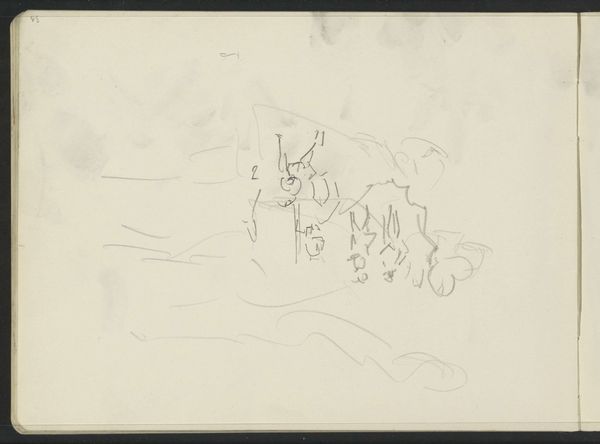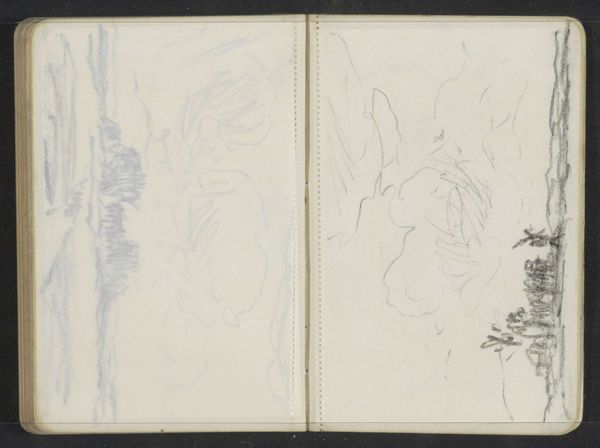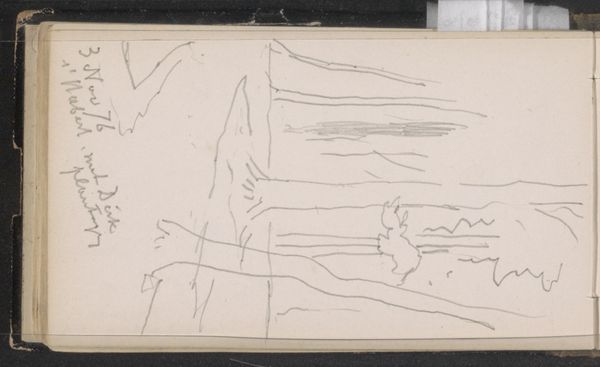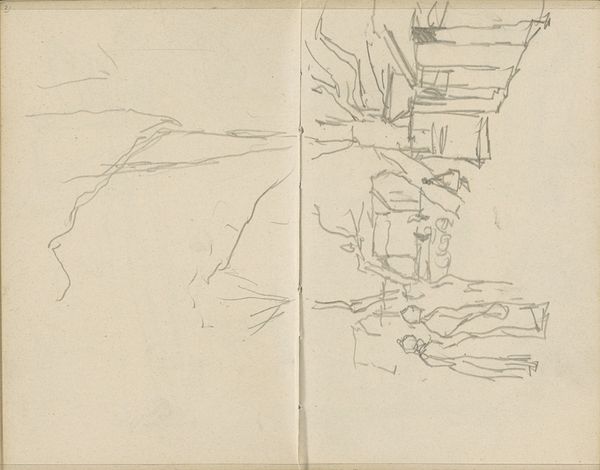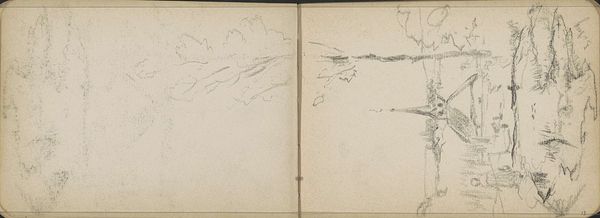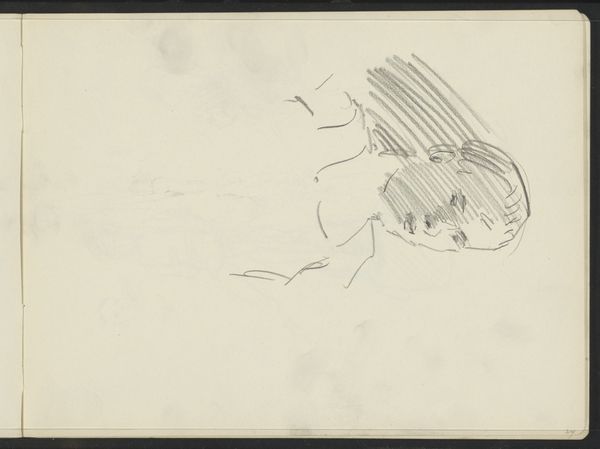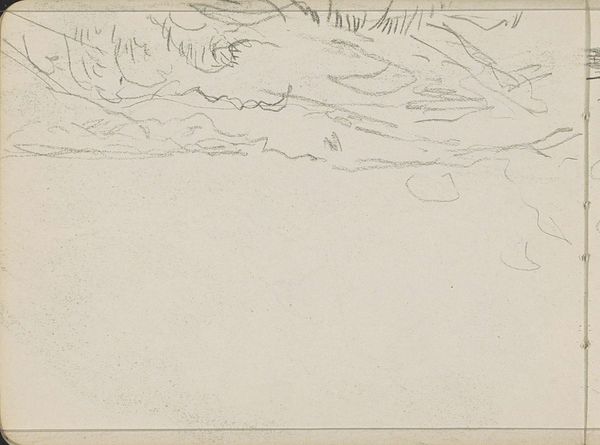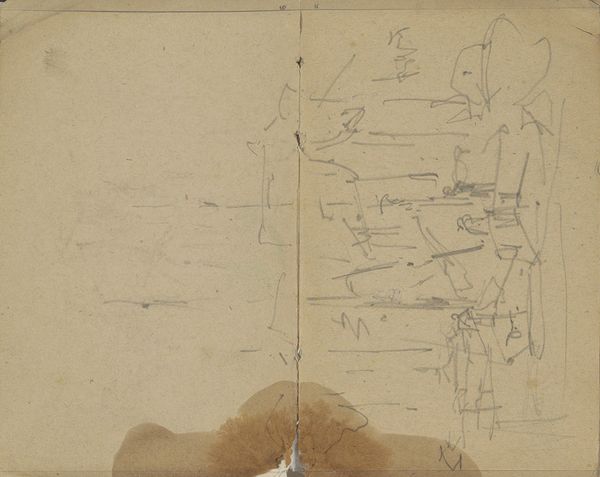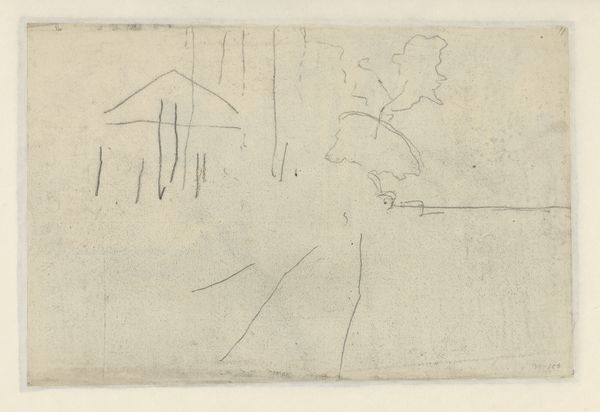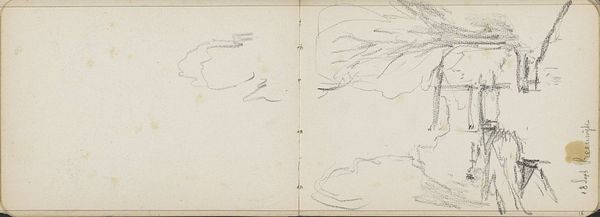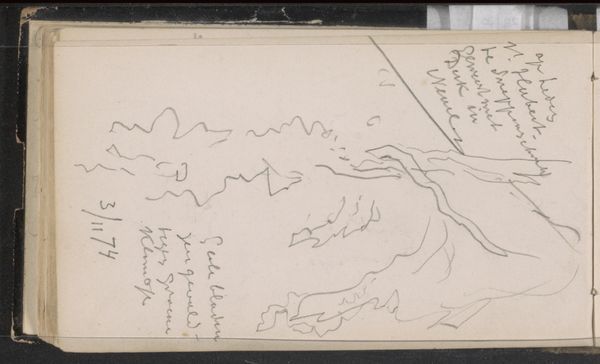
drawing, pencil
#
drawing
#
imaginative character sketch
#
quirky sketch
#
dutch-golden-age
#
pen sketch
#
dog
#
landscape
#
personal sketchbook
#
idea generation sketch
#
sketchwork
#
ink drawing experimentation
#
pen-ink sketch
#
pencil
#
sketchbook drawing
#
genre-painting
#
sketchbook art
#
realism
Copyright: Rijks Museum: Open Domain
Editor: So, this is "Hunter Sitting in the Scheveningse Bosjes" by Johannes Tavenraat, created in 1873. It's a pencil and pen drawing currently held at the Rijksmuseum. I'm immediately struck by how informal it feels, like a snapshot from a sketchbook. What stands out to you about it? Curator: It's interesting you call it informal. For me, the informality speaks to something deeper about how we remember and construct our relationship with nature. Note the contrast: The hunter, somewhat slouched and weary, is positioned against a backdrop of untamed nature. Do you see how Tavenraat uses symbols to evoke that feeling? Editor: I think so...The dogs at his feet, the rough, almost scribbled trees in the background – they definitely give a sense of the wild. But is that contrast intentional? Or is it just a casual observation of a hunting trip? Curator: I see intentionality in the juxtaposition. Hunting itself has deep cultural roots tied to survival and dominion over nature. But observe the hunter's posture: He’s resting, almost merging with the landscape, suggesting a cyclical relationship, perhaps even questioning our human impulse to control. How do you read that? Editor: Hmm, I never thought of it that way. The sketch appears so unassuming. But now that you point it out, I see how it could symbolize this tension between humanity and nature, a quiet reflection embedded in what I initially perceived as a casual drawing. Curator: Indeed. The image may seem simple, but Tavenraat utilizes age-old symbols of hunting, rest, and landscape to express our shifting cultural perception and changing emotional engagement with the natural world. Editor: It makes me think about how much symbolism we overlook in everyday images, just because they feel familiar. Thanks!
Comments
No comments
Be the first to comment and join the conversation on the ultimate creative platform.
